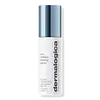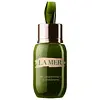What's inside
What's inside
 Key Ingredients
Key Ingredients

 Benefits
Benefits

 Concerns
Concerns

 Ingredients Side-by-side
Ingredients Side-by-side

Water
Skin ConditioningPentylene Glycol
Skin ConditioningCoco-Caprylate/Caprate
EmollientGlycerin
HumectantPropanediol
SolventSimmondsia Chinensis Seed Oil
EmollientTrehalose
HumectantOryza Sativa Bran Water
MaskingButylene Glycol
HumectantEthoxydiglycol
HumectantTriheptanoin
Skin ConditioningArginine PCA
HumectantDiglycerin
HumectantDipotassium Glycyrrhizate
HumectantSodium Hyaluronate
HumectantCollagen Amino Acids
MoisturisingGlycine Soja Oil
EmollientHelianthus Annuus Seed Oil
EmollientCitrus Aurantium Dulcis Peel Oil
MaskingCitrus Aurantium Bergamia Fruit Oil
MaskingCitrus Paradisi Peel Oil
MaskingRosmarinus Officinalis Leaf Extract
AntimicrobialCupressus Sempervirens Leaf/Nut/Stem Oil
EmollientSantalum Album Oil
MaskingCitrus Limon Peel Oil
MaskingRosa Damascena Flower Oil
MaskingJasminum Sambac Flower Extract
MaskingHydrolyzed Jojoba Esters
Skin ConditioningOryza Sativa Bran Extract
Skin ConditioningAloe Barbadensis Leaf Extract
EmollientTephrosia Purpurea Seed Extract
Skin ConditioningHelianthus Annuus Extract
EmollientJuniperus Virginiana Oil
MaskingTagetes Minuta Flower Oil
MaskingRosmarinus Officinalis Leaf Oil
MaskingCistus Ladaniferus Leaf/Stem Extract
MaskingHydrolyzed Rice Protein
Skin ConditioningTocopheryl Acetate
AntioxidantTocopherol
AntioxidantPhospholipids
Skin ConditioningCarnosine
Skin ConditioningGlyceryl Stearate Citrate
EmollientCaprylyl Glycol
EmollientPolyglutamic Acid
Skin ConditioningGlycolipids
Skin ConditioningGlycine Soja Sterols
EmollientAcrylates/C10-30 Alkyl Acrylate Crosspolymer
Emulsion StabilisingGlyceryl Caprylate
EmollientSclerotium Gum
Emulsion StabilisingPolyquaternium-80
CleansingDidecyldimonium Chloride
EmulsifyingDianthus Caryophyllus Flower Extract
MaskingXanthan Gum
EmulsifyingMethylpropanediol
SolventCetearyl Alcohol
EmollientPEG-40 Hydrogenated Castor Oil
EmulsifyingAmmonium Acryloyldimethyltaurate/Beheneth-25 Methacrylate Crosspolymer
Emulsion StabilisingPhytic Acid
Polysorbate 20
EmulsifyingTetrasodium Glutamate Diacetate
Citric Acid
BufferingSodium Hydroxide
BufferingSodium Polyacryloyldimethyl Taurate
Emulsion StabilisingSodium Benzoate
MaskingPotassium Sorbate
PreservativeLimonene
PerfumingLinalool
PerfumingWater, Pentylene Glycol, Coco-Caprylate/Caprate, Glycerin, Propanediol, Simmondsia Chinensis Seed Oil, Trehalose, Oryza Sativa Bran Water, Butylene Glycol, Ethoxydiglycol, Triheptanoin, Arginine PCA, Diglycerin, Dipotassium Glycyrrhizate, Sodium Hyaluronate, Collagen Amino Acids, Glycine Soja Oil, Helianthus Annuus Seed Oil, Citrus Aurantium Dulcis Peel Oil, Citrus Aurantium Bergamia Fruit Oil, Citrus Paradisi Peel Oil, Rosmarinus Officinalis Leaf Extract, Cupressus Sempervirens Leaf/Nut/Stem Oil, Santalum Album Oil, Citrus Limon Peel Oil, Rosa Damascena Flower Oil, Jasminum Sambac Flower Extract, Hydrolyzed Jojoba Esters, Oryza Sativa Bran Extract, Aloe Barbadensis Leaf Extract, Tephrosia Purpurea Seed Extract, Helianthus Annuus Extract, Juniperus Virginiana Oil, Tagetes Minuta Flower Oil, Rosmarinus Officinalis Leaf Oil, Cistus Ladaniferus Leaf/Stem Extract, Hydrolyzed Rice Protein, Tocopheryl Acetate, Tocopherol, Phospholipids, Carnosine, Glyceryl Stearate Citrate, Caprylyl Glycol, Polyglutamic Acid, Glycolipids, Glycine Soja Sterols, Acrylates/C10-30 Alkyl Acrylate Crosspolymer, Glyceryl Caprylate, Sclerotium Gum, Polyquaternium-80, Didecyldimonium Chloride, Dianthus Caryophyllus Flower Extract, Xanthan Gum, Methylpropanediol, Cetearyl Alcohol, PEG-40 Hydrogenated Castor Oil, Ammonium Acryloyldimethyltaurate/Beheneth-25 Methacrylate Crosspolymer, Phytic Acid, Polysorbate 20, Tetrasodium Glutamate Diacetate, Citric Acid, Sodium Hydroxide, Sodium Polyacryloyldimethyl Taurate, Sodium Benzoate, Potassium Sorbate, Limonene, Linalool
Cyclopentasiloxane
EmollientAlgae Extract
EmollientGlycerin
HumectantDimethicone
EmollientPolysilicone-11
Isononyl Isononanoate
EmollientDimethicone/PEG-10/15 Crosspolymer
Cyclohexasiloxane
EmollientSesamum Indicum Seed Oil
EmollientMedicago Sativa Seed Powder
Skin ConditioningHelianthus Annuus Seedcake
AbrasivePrunus Amygdalus Dulcis Seed Meal
AbrasiveEucalyptus Globulus Leaf Oil
PerfumingSodium Gluconate
Skin ConditioningCopper Gluconate
Skin ConditioningCalcium Gluconate
HumectantMagnesium Gluconate
Skin ConditioningZinc Gluconate
Skin ConditioningTocopheryl Succinate
AntioxidantNiacin
SmoothingSesamum Indicum Seed Powder
Skin ConditioningWater
Skin ConditioningDimethicone Crosspolymer
Emulsion StabilisingLaminaria Ochroleuca Extract
Skin ConditioningTriticum Vulgare Flour Lipids
Skin ConditioningCitrus Aurantifolia Peel Extract
CleansingCrithmum Maritimum Extract
Skin ConditioningAlteromonas Ferment Extract
Skin ConditioningChlorella Vulgaris Extract
Skin ConditioningYeast Extract
Skin ConditioningCholesterol
EmollientLinoleic Acid
CleansingTocopherol
AntioxidantTetraacetylphytosphingosine
Skin ConditioningCaprylic/Capric Triglyceride
MaskingRosmarinus Officinalis Leaf Oil
MaskingOcimum Basilicum Oil
MaskingLavandula Angustifolia Oil
MaskingLavandula Hybrida Oil
EmollientDipropylene Glycol
HumectantAlcohol Denat.
AntimicrobialSodium Citrate
BufferingParfum
MaskingEugenol
PerfumingLimonene
PerfumingLinalool
PerfumingBHT
AntioxidantPhenoxyethanol
PreservativePotassium Sorbate
PreservativeCyclopentasiloxane, Algae Extract, Glycerin, Dimethicone, Polysilicone-11, Isononyl Isononanoate, Dimethicone/PEG-10/15 Crosspolymer, Cyclohexasiloxane, Sesamum Indicum Seed Oil, Medicago Sativa Seed Powder, Helianthus Annuus Seedcake, Prunus Amygdalus Dulcis Seed Meal, Eucalyptus Globulus Leaf Oil, Sodium Gluconate, Copper Gluconate, Calcium Gluconate, Magnesium Gluconate, Zinc Gluconate, Tocopheryl Succinate, Niacin, Sesamum Indicum Seed Powder, Water, Dimethicone Crosspolymer, Laminaria Ochroleuca Extract, Triticum Vulgare Flour Lipids, Citrus Aurantifolia Peel Extract, Crithmum Maritimum Extract, Alteromonas Ferment Extract, Chlorella Vulgaris Extract, Yeast Extract, Cholesterol, Linoleic Acid, Tocopherol, Tetraacetylphytosphingosine, Caprylic/Capric Triglyceride, Rosmarinus Officinalis Leaf Oil, Ocimum Basilicum Oil, Lavandula Angustifolia Oil, Lavandula Hybrida Oil, Dipropylene Glycol, Alcohol Denat., Sodium Citrate, Parfum, Eugenol, Limonene, Linalool, BHT, Phenoxyethanol, Potassium Sorbate
 Reviews
Reviews

Ingredients Explained
These ingredients are found in both products.
Ingredients higher up in an ingredient list are typically present in a larger amount.
Glycerin is already naturally found in your skin. It helps moisturize and protect your skin.
A study from 2016 found glycerin to be more effective as a humectant than AHAs and hyaluronic acid.
As a humectant, it helps the skin stay hydrated by pulling moisture to your skin. The low molecular weight of glycerin allows it to pull moisture into the deeper layers of your skin.
Hydrated skin improves your skin barrier; Your skin barrier helps protect against irritants and bacteria.
Glycerin has also been found to have antimicrobial and antiviral properties. Due to these properties, glycerin is often used in wound and burn treatments.
In cosmetics, glycerin is usually derived from plants such as soybean or palm. However, it can also be sourced from animals, such as tallow or animal fat.
This ingredient is organic, colorless, odorless, and non-toxic.
Glycerin is the name for this ingredient in American English. British English uses Glycerol/Glycerine.
Learn more about GlycerinLimonene is a fragrance that adds scent and taste to a formulation.
It's found in the peel oil of citrus fruits and other plants such as lavender and eucalyptus. The scent of limonene is generally described as "sweet citrus".
Limonene acts as an antioxidant, meaning it helps neutralize free radicals.
When exposed to air, oxidized limonene may sensitize the skin. Because of this, limonene is often avoided by people with sensitive skin.
The term 'fragrance' is not regulated in many countries. In many cases, it is up to the brand to define this term. For instance, many brands choose to label themselves as "fragrance-free" because they are not using synthetic fragrances. However, their products may still contain ingredients such as essential oils that are considered a fragrance.
Learn more about LimoneneLinalool is a fragrance and helps add scent to products. It's derived from common plants such as cinnamon, mint, citrus, and lavender.
Like Limonene, this ingredient oxidizes when exposed to air. Oxidized linalool can cause allergies and skin sensitivity.
This ingredient has a scent that is floral, spicy tropical, and citrus-like.
Learn more about LinaloolPotassium Sorbate is a preservative used to prevent yeast and mold in products. It is commonly found in both cosmetic and food products.
This ingredient comes from potassium salt derived from sorbic acid. Sorbic acid is a natural antibiotic and effective against fungus.
Both potassium sorbate and sorbic acid can be found in baked goods, cheeses, dried meats, dried fruit, ice cream, pickles, wine, yogurt, and more.
You'll often find this ingredient used with other preservatives.
Learn more about Potassium SorbateRosmarinus Officinalis Leaf Oil is oil expressed from the leaves of the rosemary plant.
Rosemary Leaf Oil is a fragrance and helps give your product a scent. If you are sensitive to irritating fragrances, this one contains camphor. Camphor has been found to irritate skin.
This oil also contains antioxidant and antimicrobial properties. As an antioxidant, it may protect you skin against damage. This can help slow down the signs of aging.
Learn more about Rosmarinus Officinalis Leaf OilTocopherol (also known as Vitamin E) is a common antioxidant used to help protect the skin from free-radicals and strengthen the skin barrier. It's also fat soluble - this means our skin is great at absorbing it.
Vitamin E also helps keep your natural skin lipids healthy. Your lipid skin barrier naturally consists of lipids, ceramides, and fatty acids. Vitamin E offers extra protection for your skin’s lipid barrier, keeping your skin healthy and nourished.
Another benefit is a bit of UV protection. Vitamin E helps reduce the damage caused by UVB rays. (It should not replace your sunscreen). Combining it with Vitamin C can decrease sunburned cells and hyperpigmentation after UV exposure.
You might have noticed Vitamin E + C often paired together. This is because it is great at stabilizing Vitamin C. Using the two together helps increase the effectiveness of both ingredients.
There are often claims that Vitamin E can reduce/prevent scarring, but these claims haven't been confirmed by scientific research.
Learn more about TocopherolWater. It's the most common cosmetic ingredient of all. You'll usually see it at the top of ingredient lists, meaning that it makes up the largest part of the product.
So why is it so popular? Water most often acts as a solvent - this means that it helps dissolve other ingredients into the formulation.
You'll also recognize water as that liquid we all need to stay alive. If you see this, drink a glass of water. Stay hydrated!
Learn more about Water